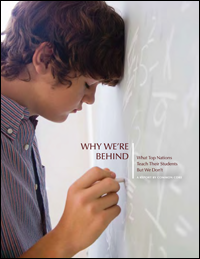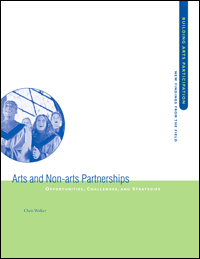Arts Education
Grantmakers in the Arts holds arts education as one of its core funding focus areas. GIA is committed to invigorate funding and support for arts education within federal policy and defend that every resident has access to the arts as part of a well-rounded, life-long education. In 2012, GIA formed the Arts Education Funders Coalition (AEFC), an interest group within GIA, to address identified needs in comprehensive arts education and to strengthen communication and networking among arts education funders. Advised by a committee of Coalition members, GIA engaged the services of Washington, DC-based Penn Hill Group, a firm with education policy expertise and experience working with diverse education groups to research, develop, and promote educational policy strategies.
Most recently, GIA worked with Representative Suzanne Bonamici (D-OR) on the development of the Arts Education for All Act, the broadest arts education policy bill ever introduced in Congress.
In Spring 2021, GIA influenced the U.S. Department of Education to highlight the importance of equitable access to arts and culture to the process of reopening schools and to make explicit how racialized this access was prior to the pandemic and that addressing this inequity is essential to effective reopening.
Grantmakers in the Arts is delighted that in 2020 Congress passed the Supporting Older Americans Act, including our recommendations that the Administration on Aging include the arts in the issues to be identified and addressed and be included among supportive services for older Americans.
GIA has successfully lobbied to include arts-related provisions in the Child Care for Working Families Act, which proposes to better help low-income families pay for childcare and expand high-quality state preschool options.
GIA is extremely proud of our work over the past several years on raising the visibility of the arts in the Elementary and Secondary Education Act (ESEA) in its legislative form. GIA and Penn Hill Group continue these advocacy efforts around the Every Student Succeeds Act (ESSA), guiding GIA members and their grantees in advocating for new or expanded arts programs at their local schools and districts.
2009, 102 pages, Common Core, 1016 16th Street NW, 7th Floor, Washington, D.C., 20036, (202) 223-1854 http://www.commoncore.org
Download:
Read More...2010, 16 pages, The Urban Institute, 2100 M Street NW, Washington, D.C., 20037, (202) 833-7200 http://www.urban.org
Download:
![]() Arts and Non-arts Partnerships (2.1Mb)
Arts and Non-arts Partnerships (2.1Mb)
A report from the 1994 arts education conference of Americans for the Arts co-founding organization, the American Council for the Arts. As stated in the introduction, "The historical relationship between business and the arts has been governed by a single set of terms. The arts—and arts education—have looked to the private sector for financial support and patronage, and business has looked to the arts to enrich the lives of their employees and of the community, but not for any strictly business benefit.
Read More...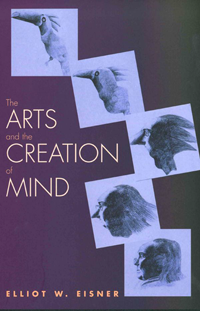
Elliott Eisner argues that the arts are more important means for developing complex and subtle aspects of the mind to deal with the ambiguities and uncertainties of daily life than are the formally structured curricula. He provides a fresh and admittedly iconoclastic perspective on what the arts can contribute to education, namely a new vision of both its aims and its means.
Read More...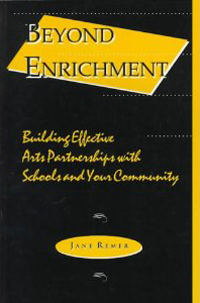
Beyond Enrichment tackles important issues facing arts education: school reform, artist training, curriculum standards, partnerships, and the building blocks of long-term change. It includes essays by and interviews with more than 40 leaders in the field—administrators, artists, educators, foundation officials, and others. The book also features case studies of arts education programs and a wealth of personal insights, stories, and strategies.
Read More...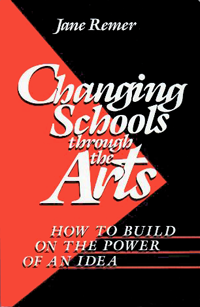
This book offers insight into how to establish the arts in schools and use them as a vehicle for school renewal at the same time. The author makes a convincing case for the important role of visual arts, music, dance, drama, and architecture in educating our youth.
284 pp, paperback (1990, Americans for the Arts)
Read More...This handbook describes how partnerships between local cultural agencies, schools, businesses, and other sectors of the community can make a positive impact on arts education. Learn how 11 communities built their local partnerships, and how you can adapt similar programs to your community.
40pp, saddle-stitched paper (1995, Americans for the Arts' Institute for Community Development and the Arts)
Available online from Americans for the Arts
Read More...This brief presents research findings as well as policy recommendations arising from a study of the No Child Left Behind Act and its implications for immigrant children and English language learners (ELLs). Analyses are based on nationally-representative data from the Schools and Staffing Survey and detailed case studies of selected elementary schools and school districts serving high concentrations of ELL students. Results reveal an extraordinary degree of concentration of ELL students in a few schools that tend to be large, urban and serve a predominantly minority student population.
Read More..."Learning and the Arts: Crossing Boundaries" was a meeting of 120 funding professionals in the arts, education, or children, youth and family programs of fifty foundations, that was organized by the Getty Trust, the John D. and Catherine T. MacArthur Foundation, and the Geraldine R. Dodge Foundation. Together with a group of outstanding researchers, practitioners, and policymakers, they explored the value philanthropy can add to education and child development by integrating the arts into schools and non-school programs for children and youth.
Read More...
